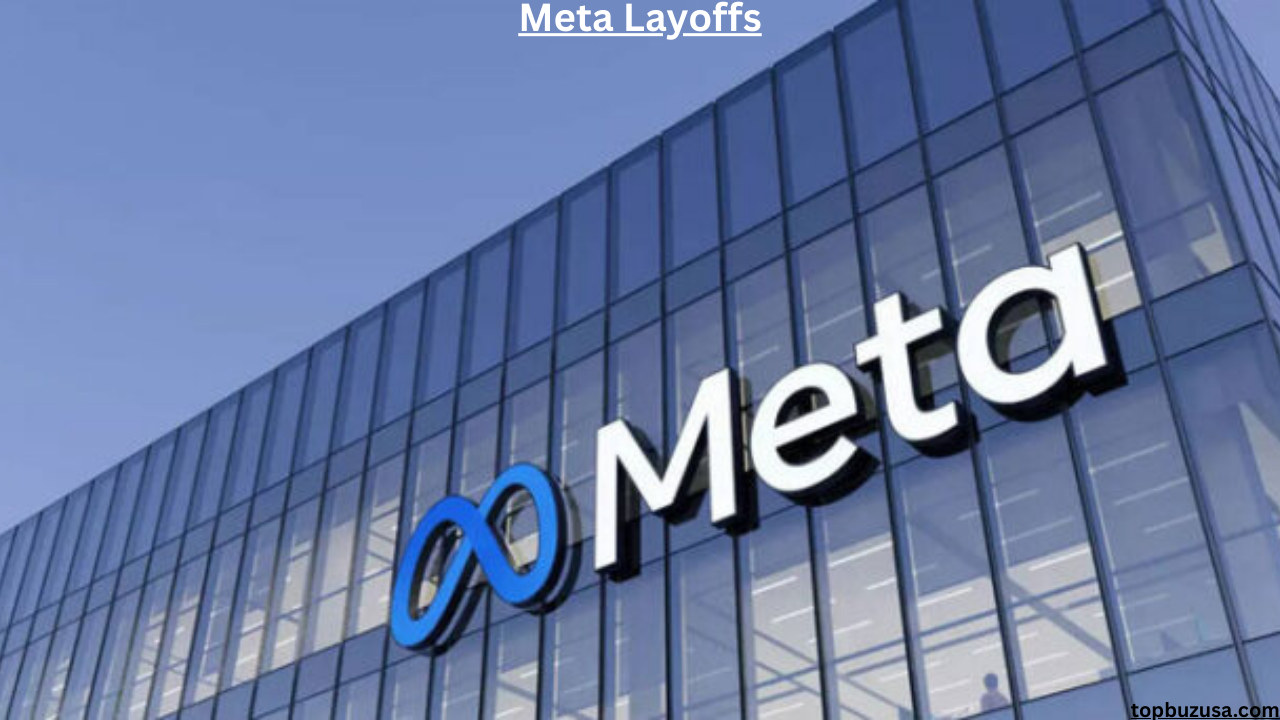Once hailed as the undisputed titan of social media, Meta Layoffs Platforms Inc.—the parent company of Facebook, Instagram, and WhatsApp—has found itself navigating choppy waters. Over the past two years, the company has undergone several rounds of mass layoffs, a move that has left thousands jobless and sent shockwaves across the tech world. While layoffs in the corporate world are nothing new, the scale and frequency of Meta’s workforce reductions are particularly significant, given its influence on the global digital ecosystem.
These layoffs are more than just internal cost-cutting measures—they reflect deeper shifts within Meta’s long-term vision, its financial performance, and the overall direction of the technology industry. From the pivot to the metaverse and rising competition in artificial intelligence, to a global economic cooldown post-COVID, Meta’s decisions have been shaped by both internal ambition and external pressures.
In this article, we’ll take a detailed look at how these layoffs unfolded, what prompted them, their impact on people and the industry, and what the future might hold for one of the most powerful tech companies in the world.
The Layoffs Unfold: A Timeline of Events

The first whispers of trouble began in mid-2022, when Meta implemented a company-wide hiring freeze and hinted at cost-cutting measures. By November of that year, Meta made headlines with its largest layoff in history, eliminating over 11,000 roles—roughly 13% of its workforce. This sudden move came as a shock to many, especially considering Meta’s aggressive hiring spree during the pandemic years.
In March 2023, another wave followed, affecting an additional 10,000 employees. These layoffs weren’t random—they specifically targeted recruitment teams, middle management, and even technical divisions like Reality Labs. The scale of these cuts made it clear that Meta was undergoing a serious internal restructure, not just a temporary downsizing.
By mid-2024, the company had laid off over 21,000 employees in total. Each round was announced via terse internal memos from CEO Mark Zuckerberg, often framed within his broader narrative of making Meta a “leaner and more efficient company.” While Meta has always been a trailblazer in innovation, the sudden shift toward austerity marked a profound moment of reckoning, both for the company and the entire tech industry.
Why Meta Made the Cuts: Analyzing the Key Drivers

Understanding why Meta initiated such massive layoffs requires diving into several overlapping factors. First and foremost is the post-pandemic market correction. During the COVID-19 boom, Meta—and many other tech giants—dramatically increased their hiring to meet surging digital demand. But as the world reopened, user growth plateaued and advertising revenues declined, leaving the company bloated and vulnerable.
Then came the financial pressure. In 2022 and 2023, Meta saw significant declines in ad revenue, especially from small businesses tightening their budgets. Shareholders began demanding better profit margins, and the stock price took a steep dive. Trimming the workforce emerged as a way to satisfy Wall Street and regain investor confidence.
At the same time, Meta was heavily investing in the metaverse through its Reality Labs division, a move that many considered premature or even misguided. Despite burning billions of dollars, the metaverse has yet to show any major return on investment. Critics argue that Meta’s obsession with building a virtual world distracted it from real-world financial concerns and product innovation.
Adding to this, the rise of artificial intelligence has changed the tech landscape. Companies are now racing to dominate AI, and Meta is no exception. To fund AI initiatives, the company redirected resources from other departments, further justifying the layoffs. In short, the layoffs were not just about cutting costs—they were about reshaping the company for a very different future.
Human and Organizational Impact

Behind every layoff statistic is a human story. For employees, the Meta layoffs were devastating—not just financially, but emotionally and psychologically. Many described the process as impersonal, with abrupt access shutdowns and generic emails replacing years of service and loyalty. Internal morale took a nosedive, and even retained employees expressed fear and anxiety about their future at the company.
This sudden upheaval significantly affected Meta’s culture. Once seen as an innovative playground for the brightest minds in tech, the company began to feel more corporate and cautious. Meetings became more tense, performance metrics stricter, and collaboration more risk-averse. The spirit of experimentation was replaced by the pressure of productivity.
The layoffs also triggered a talent drain, with some of Meta’s top minds either moving to competitors or starting their own ventures. Interestingly, this exodus led to a mini-boom in tech startups, many founded by former Meta employees armed with experience and ambition. But this shift also meant a loss of institutional knowledge, weakening Meta’s edge in some key areas.
Another major concern was diversity. Reports emerged suggesting that layoffs disproportionately affected women, people of color, and workers on visas. Many of these individuals had worked hard to break into the tech industry, only to be among the first let go. This has sparked broader conversations about equity in tech and how layoffs can reverse years of DEI progress.
Industry-Wide Ripple Effects
Meta Layoffs actions didn’t happen in a vacuum—they set a precedent. Shortly after Meta’s initial round of layoffs, other tech giants like Amazon, Microsoft, and Google followed suit, each announcing tens of thousands of job cuts. The domino effect underscored a broader reckoning in the tech sector: the era of unchecked growth and hiring was officially over.
For the startup ecosystem, this had mixed consequences. On one hand, the influx of available talent created opportunities for younger companies to hire top-tier engineers and designers. On the other, investor sentiment turned cautious. Startups that once easily raised funds began facing stricter due diligence and longer fundraising cycles.
Tech job seekers, meanwhile, found themselves navigating a far more competitive market. Roles that once attracted 50 applicants were now receiving 500. Companies began favoring candidates with AI, cloud, and cybersecurity expertise, pushing professionals to quickly upskill or risk being left behind.
Perhaps most notably, the Meta layoffs served as a wake-up call. For years, Big Tech was viewed as stable and secure—a dream destination for career-minded individuals. Now, employees and students alike are rethinking their paths, prioritizing flexibility, work-life balance, and long-term growth over brand prestige.
Conclusion
The Meta Layoffs mark a defining moment not only for the company but for the tech industry as a whole. What began as a financial recalibration evolved into a sweeping redefinition of what it means to work at, and lead, a technology company in a post-pandemic world. Meta’s move to cut thousands of jobs reflects deeper trends—economic uncertainty, rapid technological evolution, and changing workforce expectations.
For Meta, the road ahead is still uncertain. Will its bet on the metaverse pay off? Can it reclaim lost trust from employees and investors? Only time will tell. But one thing is clear: the age of limitless expansion in Silicon Valley is over. What comes next will be a test of resilience, vision, and adaptability—for Meta and for the entire industry.
(FAQs)
When did Meta Layoffs start laying off employees?
Meta began its first major round of layoffs in November 2022, followed by additional rounds in 2023 and 2024.
How many people were laid off by Meta in total?
As of mid-2024, over 21,000 employees have been laid off across various departments.
Which departments were most affected by the layoffs?
Recruitment, middle management, and technical teams such as Reality Labs were significantly impacted.
What is Meta’s official reason for the layoffs?
Meta cited the need to streamline operations, reduce costs, and refocus on core priorities like AI and the metaverse.
How have the layoffs affected Meta’s stock price and financial performance?
Initially, layoffs helped boost investor confidence and improve profit margins, but long-term impacts remain to be seen.
You May Also Read: https://topbuzusa.com/fortune-coins/





